• D.J. Moore welcomes Keenan Allen and Rome Odunze: The two new receivers are great for the Chicago Bears offense in general but not great for Moore’s fantasy value.
• Caleb Williams could take Moore to new heights: Quarterback play has consistently held Moore’s production back but that might no longer be the case.
• Get a head start on fantasy football: Use PFF's fantasy football mock draft simulator to create real live mock draft simulations to get ready for your live draft!
Estimated reading time: 6 minutes
The player profile series gives the most in-depth view of a player possible using the best data points at PFF’s disposal to look at how good the player has performed, what competition the player has for touches, and how other teammates and coaches will impact each player's performance.
Last updated: 7:15 a.m. Tuesday, July 9
Player performance
Moore shined as a rookie in 2018 with the Carolina Panthers and has slowly but surely improved. His fantasy value was always a question mark with the Panthers given the quarterback situation and offense in general. He never caught more than four touchdowns until 2022, when he caught seven, but his yards per game were remarkably low.
A trade to the Chicago Bears helped him significantly. His PFF receiving grade was consistently between 73.0 and 80.0 until last season. His target rate was a little lower in part because of how often Justin Fields would hold onto the ball, but he set a career-low in drops and a career-high in explosive plays and yards per route run. He earned a positive grade at the highest rate of his career as well as avoided a negative grade at the highest rate.
Moore recently ranked 12th in our wide receiver rankings heading into the 2024 season. Moore could be even better, but it’s been hard to know for sure given the quarterback play throughout his career. The highest-graded quarterback Moore has played with is Fields, and he’s likely a backup this season. Most of the quarterbacks he played with in Carolina became backups once they joined another team.
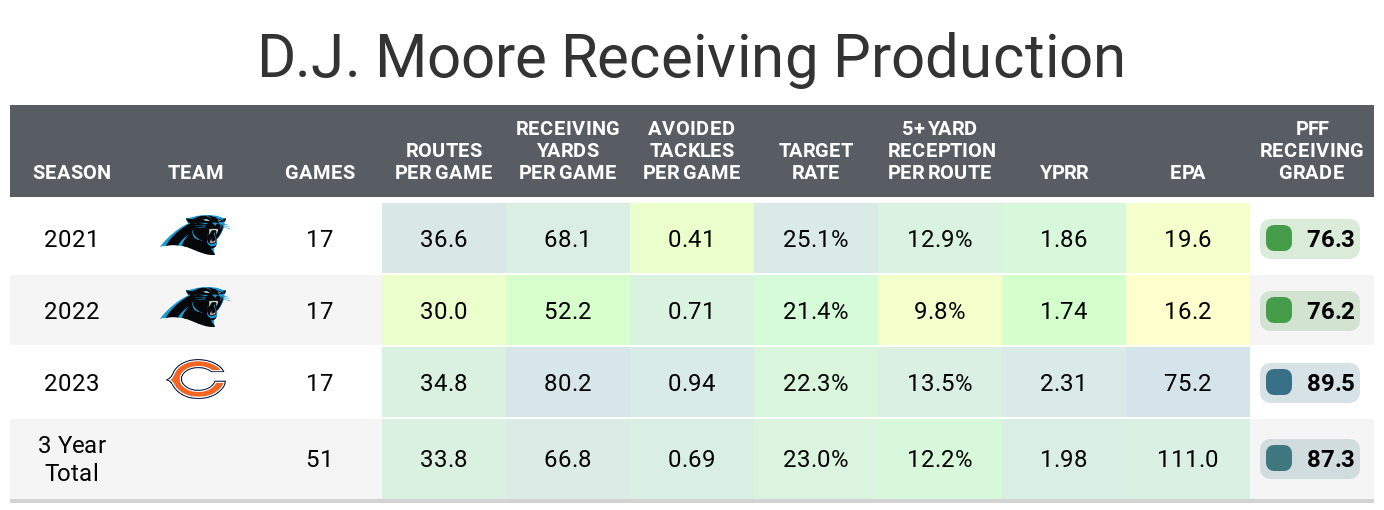
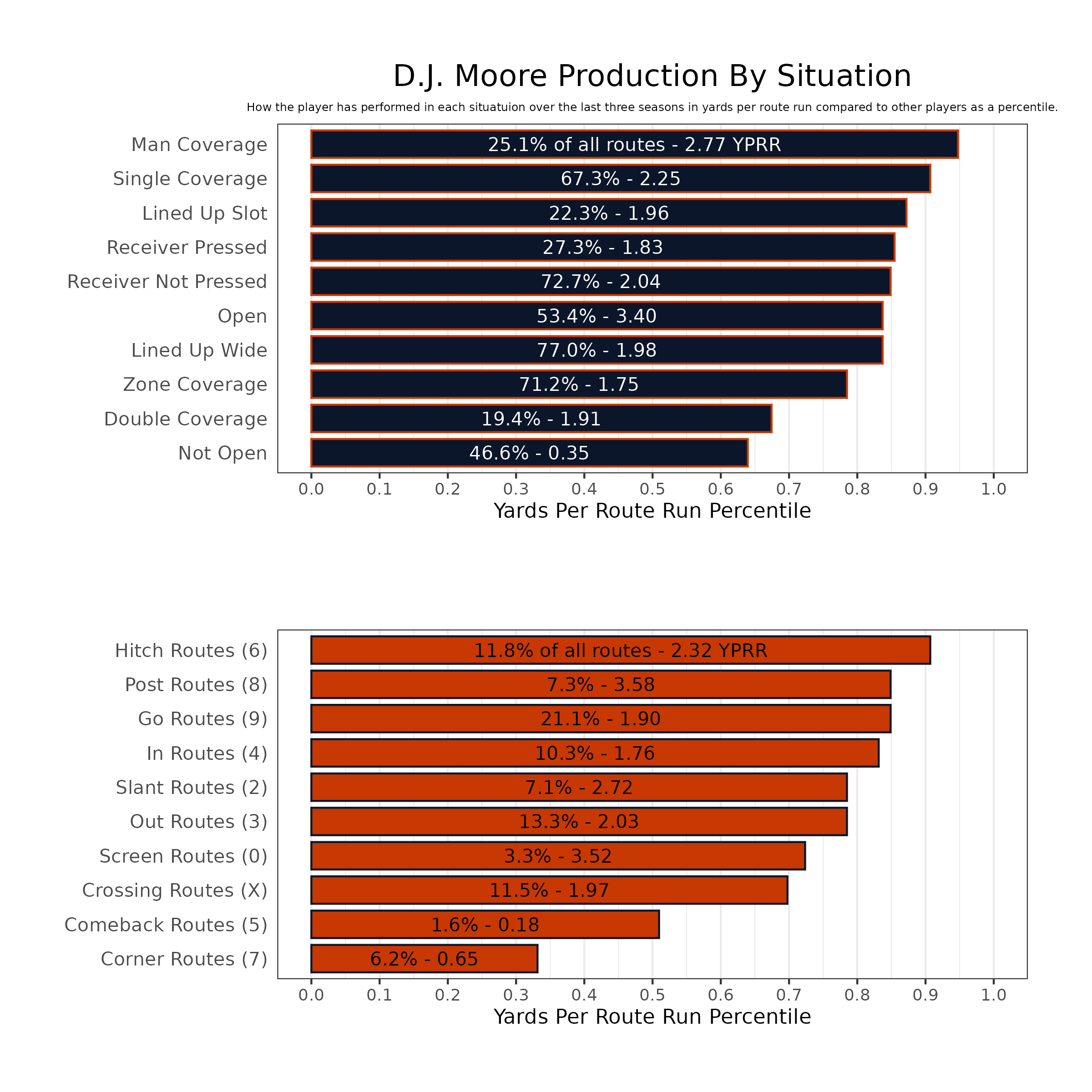
Competition for touches
The big reason for concern for Moore in 2024 is his competition for touches went up significantly. Last season, the Bears had six other wide receivers with at least 50 routes run, and none of them had a PFF receiving grade above 60.0. Over five years in Carolina, he had nine teammates with at least 100 routes, and Curtis Samuel earned the highest grade with a 72.5 mark.
Moore is among the top-five wide receivers in targets over the past five seasons, and now he’s teammates with Keenan Allen, who also ranks in the top five. Allen has a better PFF receiving grade, higher target rate and more yards per route run over the last three seasons. Allen is 32 years old, so Moore is still expected to be the Bears' top receiver, but Allen is instantly the best wide receiver Moore has played with in the NFL since he signed.
Chicago also added Rome Odunze in the first round of the NFL draft. Odunze was the third overall wide receiver in this draft but would likely have been first in either of the previous two drafts. He is probably the second-best wide receiver Moore has ever played with behind Allen, and there is a chance Odunze surpasses Allen this year.
Moore will keep his elite potential in any given week, but his odds of being a top-24 or top-36 wide receiver in any given week have gone down, which will lead to fewer fantasy points per game. If Allen or Odunze suffer an injury, that will likely mean a signficant increase in target share for the two healthy receivers.
If there is one bright point, Allen isn’t as good when he’s double-covered compared to other elite receivers. With the other talent Chicago has at receiver, he should be double-covered less often.

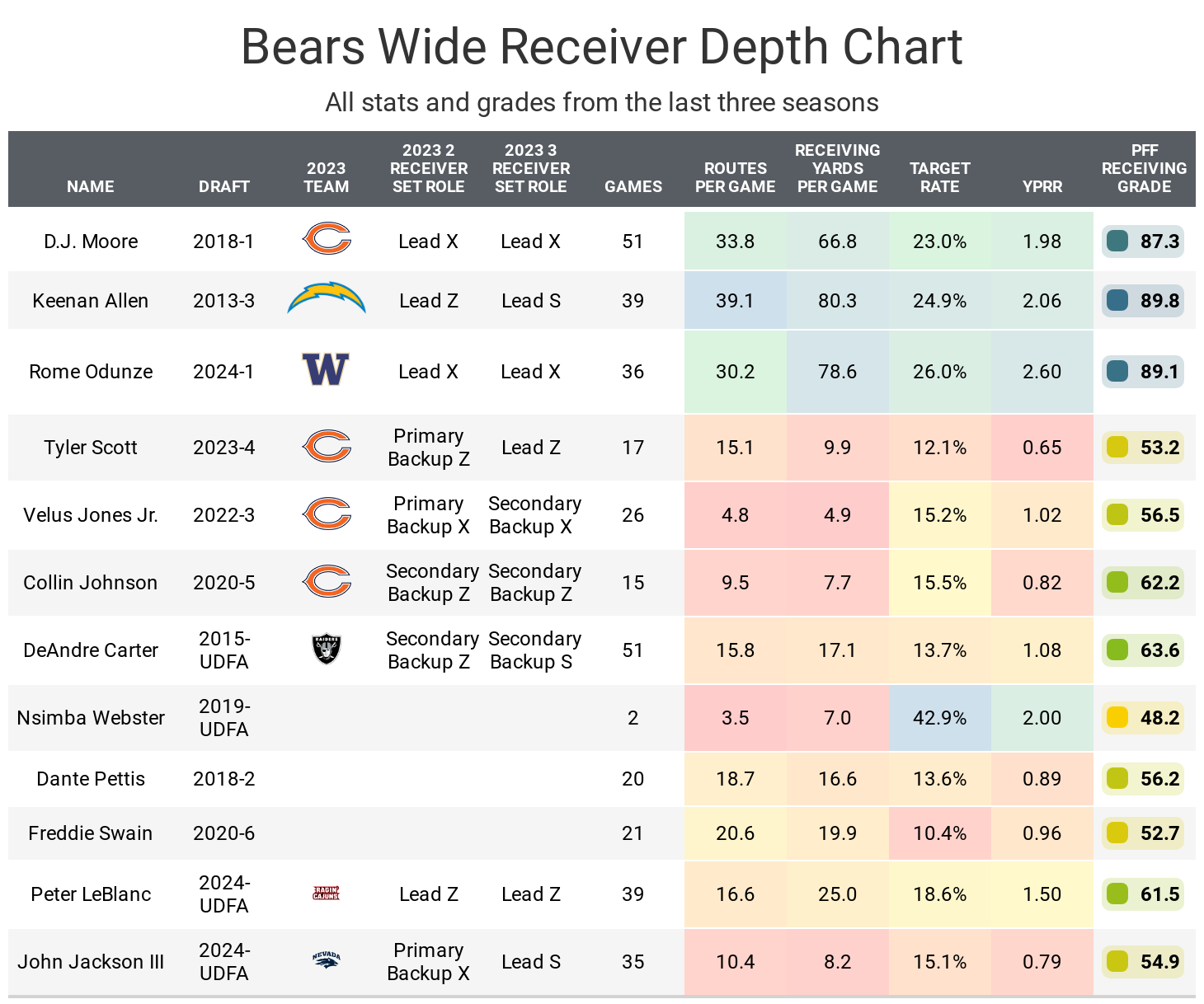
Impact of teammates
The other big concern for Moore outside of the wide receiver competition is Shane Waldron. While Waldron has experience with multiple great receivers in D.K. Metcalf and Tyler Lockett, the Seattle Seahawks have consistently been among the worst teams on plays per game. If that continues, that’s bad news for everyone on the Bears offense.
While those are two big red flags compared to last season, the one piece of good news is Caleb Williams. The first overall pick in the draft should be the best quarterback Moore’s played with. If Williams has a rookie year like C.J. Stroud, that could go a long way in counteracting the two big negatives in target share and plays per game. If he has a rookie year more like Bryce Young, then this could be Moore’s worst fantasy season.
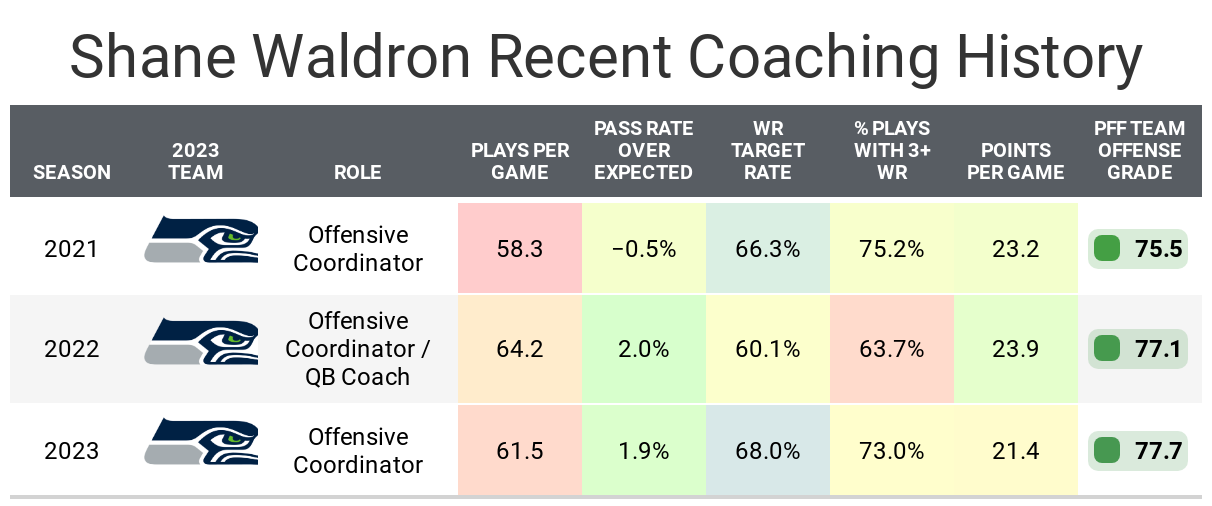
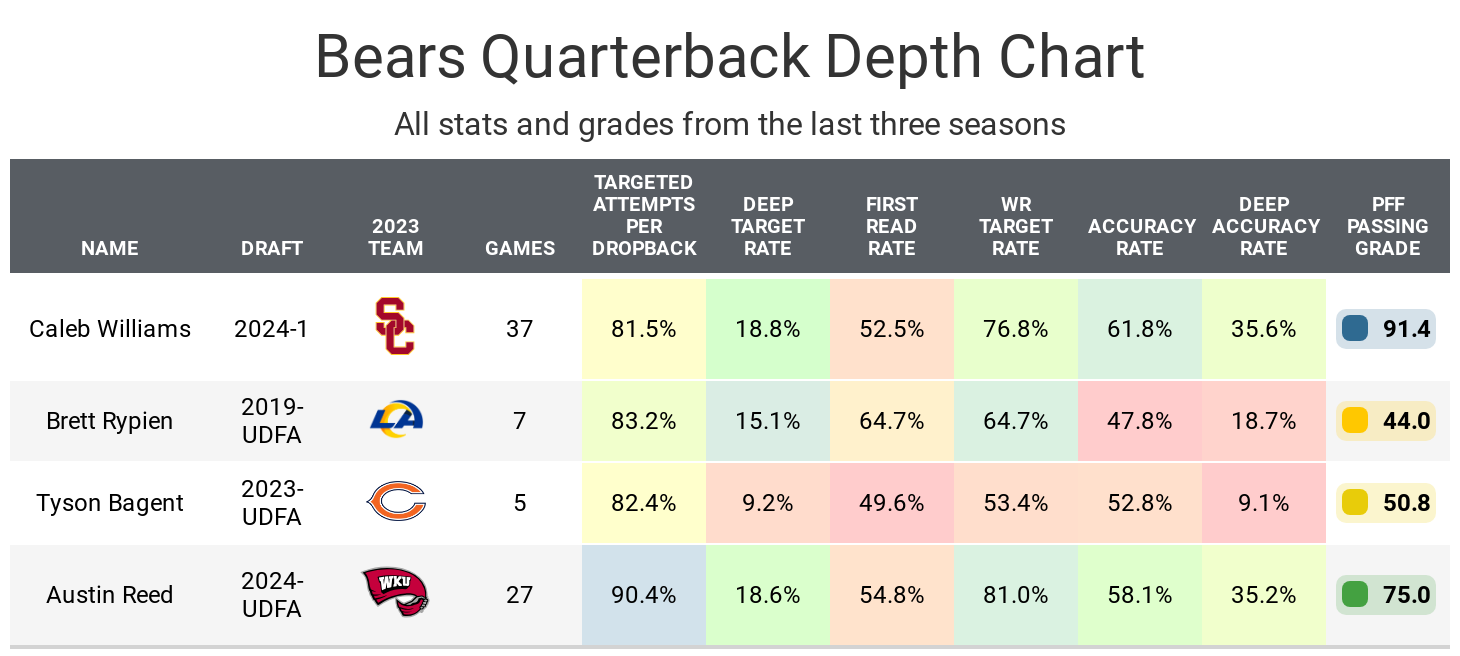
Bottom line
Moore finished WR6 last season. Significant target share has driven his ADP all the way down to WR18, which is warranted. Another top-10 season is well within reach if Caleb Williams plays well or one of the new receivers suffers an injury, but there is also a scenario where he has his worst fantasy performance to date.

Footnotes
- Statistics for the tables and charts were generally chosen based on their ability to predict future fantasy performance on either per game or per opportunity basis, or chosen for their ability to describe the player relative to other players at the same position.
- Opportunities for this purpose are defined by passing dropbacks, rushing attempts and receiving routes run.
- Numbers are either by season or based on the last three years. For rookies, only college numbers are included. For non-rookies, only NFL numbers are included, even if they played in college in the last three years.
- Because college competition is relatively easier than NFL competition, it can be expected that most rookies will see a decline in their numbers compared to their historic numbers.
- For all of the tables in this article, colors range from blue (good or high) to red (bad or low).
- All percentiles or colors compare the given player to other players with a high sample of opportunities. Generally, it’s one-third of the possible opportunities given the sample. If the player in question doesn’t have enough opportunities, they are still compared, even though a player could look good or bad on that small sample size which might not be as predictive.
- Information on running back utilization classifications and importance can be found here, wide receiver here and tight end here.




 © 2024 PFF - all rights reserved.
© 2024 PFF - all rights reserved.